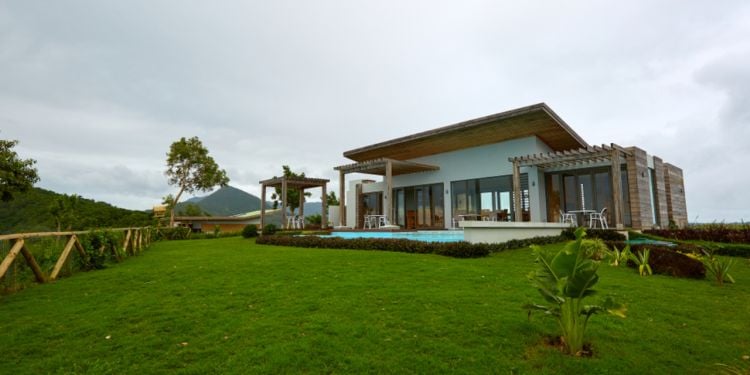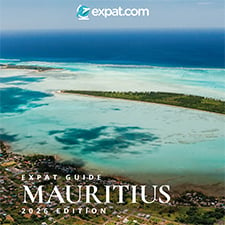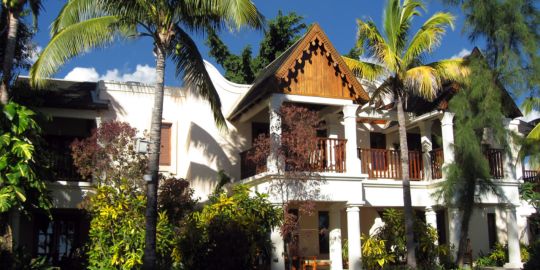Accommodation in Mauritius

Thanks to its idyllic setting, and its proximity to the African continent, India, Australia and Asia in general, this small, independent and prosperous republic attracts, every year, many foreigners seeking a high quality of life. If you're looking to make the move, accommodation should be a priority for you. Here is what you should know if you are looking for a place to stay in Mauritius.
Renting accommodation in Mauritius
Houses, villas, studios and apartments are available in Mauritius. As a general rule, accommodations are furnished and equipped with appliances. The leases are usually established for one year, with tacit renewal. For a smooth rental, it is advisable to check with the owner or the rental agency before the end of the written lease.
The payment of 1 or 2 months' deposit is often required. Remember to have an inventory of fixtures drawn up before signing the lease. Do not hesitate to take pictures during your visit. Water (CWA) and electricity (CEB) are sometimes included in the rent. Although, this practice tends to disappear these days.
Heating is not necessary in Mauritius, except for accommodations located in the center of the country, where you can find electrical appliances. Air conditioning is not always necessary, but it can be very pleasant during summer. On this last point, the electricity bill can rise very quickly if you use such an appliance.
If you go through a real estate agency when renting, note that the commission, shared between the owner and the tenant, generally represents one month's rent.
Rents in Mauritius
Prices are very variable, depending on the preferences of each and everyone (view, proximity to beaches or centers, leisure facilities, swimming pool, garden, security services, furnishings, equipment, etc.).
The Mauritian rental market is rapidly changing. Houses, apartments, studios, aparthotels, PDS villas and units with the Invest Hotel Scheme (IHS) are now available for rent.
Luxury homes are no exception, with second-home owners renting out their properties for part of the year.
Average rents in attractive areas for expatriates
If you prefer to rent a villa in Mauritius, it will cost an average of Rs 100 000 per month for a villa with several bedrooms, and usually a swimming pool and access to the beaches.
If you are not looking to live near the sea, the following places will likely be of interest to you:
Quatre Bornes (the City of flowers), where a spacious apartment is rented for about Rs 40,000 per month.
Moka was voted one of the best areas for expatriates living in Mauritius by South African Airways. In Moka, a middle-class townhouse or villa will cost about Rs 70,000 per month.
Finally, there's Port Louis, the capital, where rents start at Rs 15,000 per month for a one-bedroom apartment. If you want a larger apartment, the price will climb to about Rs 50,000 per month.
Rents according to the type of accommodation
As an indication, here are the average rents to expect according to the following types of accommodation in Mauritius:
- One-bedroom apartment in the city center - Rs 14,567
- One-bedroom apartment outside the city center - Rs 10,236
- 3-bedroom apartment downtown - Rs 29,791
- 3-bedroom apartment outside the city center - Rs 23 045
These are the average prices offered through a real estate agency, so they can be lower if you deal with the owner.
As everywhere else, some regions, in particular, attract expatriates. In order to choose the ideal region, several factors should be taken into account:
- the dynamism of the rental market;
- proximity to amenities;
- proximity to healthcare facilities;
- proximity to schools if you are relocating with your family;
- the availability of transport;
- work commuting time;
- traffic congestion;
- climate;
- preferences (sea, mountains, or city center?).
Useful links:
Directory of real estate professionals in Mauritius
Central Electricity Board - CEB
Where to live in Mauritius?
The North of Mauritius
The North of Mauritius is undoubtedly a hub for expatriates looking for a lifestyle that naturally oscillates between a relaxed lifestyle and convenience. The varied shops, proximity to the schools, located in and around Mapou for most, availability of buses (Triolet Bus Service (TBS) network), cabs and freeway make the North of the island conducive to a serene life.
Pros:
- The North of the island is well-served by public transport and the road infrastructure is well-developed and connects this region to the rest of the world.
- The area is home to shopping centers, businesses, schools, and numerous offices and workspaces.
- Many Northern beaches are among the most beautiful on the island.
Cons:
If what you want is to be away from it all, the North is not for you. The region is very popular with tourists as well as Mauritians who love this area for its beaches and its nightlife. And the summers are particularly hot.
Among the most famous villages, let's mention:
Grand Bay: this seaside town is home to all the necessary amenities, a lively nightlife while being located 15 minutes from international schools and 30 minutes from Port-Louis, the capital. Its climate is sunny all year round, with light winds and pleasant temperatures.
Pereybère: Beyond the Grand Bay coastline in the north of Mauritius, Pereybère was once a small fishing village that has changed a lot, while keeping an appreciable authentic side. Less touristy, it has all the essential amenities. As for the climate, you will enjoy very hot summers (November to March) and mild winters, while being sheltered from the wind.
Calodyne: In the North-East of Mauritius, a small preserved region, a haven of peace. It is close to the beach, which is why it is appreciated by expatriates looking for tranquility without being cut off from the world. As for the weather, Calodyne enjoys a tropical climate with rainfall and a short dry season.
The West of Mauritius
This region is also touristy, with many amenities, and has a particularly lively nightlife while being child-friendly. Its beaches are popular all year round.
Pros:
- To keep up with the influx of tourists and expatriates, more and more schools, shopping malls, gyms, shops and other developments are being built in this area.
- The beaches are never far away, especially those of Flic-en-Flac, Tamarin and La Preneuse.
- Mountains and other hiking trails are easily accessible, including the Black River National Park.
- It is easier to find peace and quiet in this area unless you are in Flic-en-Flac.
Cons:
- The Center, and even Port-Louis, are less accessible from the West than from the North, for example.
- Summers are hot, but less than in the North of the island.
Popular villages in the West are:
Tamarin: Tamarin is the seaside region, ideal for families, couples and solo expatriates. Away from the hustle and bustle of tourism, its climate is dry in winter and rather rainy in summer. There are all the amenities, stores, banks, pharmacies, supermarkets, and sports clubs with tennis courts, beach volleyball and a swimming pool. For children, there is the Paul et Virginie School (kindergarten and primary school, part of the local network of French Program Establishments in Mauritius) as well as the Telfair International Primary School.
Flic-en-Flac: located on the West coast of the island, it is the second seaside hub of Mauritius, therefore animated and touristy with bars, restaurants, nightclubs, and casinos. The beauty of its beaches is breathtaking. During the week, Flic-en-Flac is quiet, allowing you to enjoy the beaches and the many water activities, such as scuba diving or windsurfing.
The South of Mauritius
This region of the island is untouched, less touristy, with different landscapes, sometimes steep. If you are a nature lover and you do not have to travel frequently to the capital and its surroundings, the South of Mauritius is the perfect region to live fully immersed in the Mauritian way of life.
Pros:
- The South of the island is far from everything; it offers the serenity and tranquility not accessible anywhere else on the island.
- The South is literally between the mountains and the sea, so you don't have to choose.
- Some of the most beautiful beaches on the island are in the South, including Le Morne in the Southwest and Blue Bay in the Southeast.
Cons:
- The South is far from everything. Not many shopping centers, schools, or shops.
- The South is not well served by transportation, and road infrastructure is limited.
A popular village is:
Mahébourg: In the South-East of the island, Mahébourg and the surrounding villages, Blue Bay and Pointe-d'Esny, can be interesting options for solo expatriates or those without children. The village is served by a highway connecting it to the center of the island; it is a few minutes from the airport and the beaches of Pointe d'Esny and Blue Bay, which are among the most beautiful on the island. There is also a shopping center a few minutes' drive from the village and many small and varied shops and typical restaurants.
The East of Mauritius
This region is home to some of the most beautiful beaches on the island, such as Belle Mare or Trou d'Eau Douce. Its peaceful environment, its village atmosphere, its lagoon, and its wonderful bays offer an authentic atmosphere. Note also to golfers who will find breathtaking courses, such as the Constance Belle Mare Plage.
Pros:
- There are beautiful beaches in the East of the island.
- At the same time close to Flacq, which is home to shopping centers and other facilities, it is still possible to find serenity in the East of the island since it is less accessible and busy.
Cons:
- The area remains difficult to access from the center of the island, although developments are underway to remedy this.
- Schools, especially private ones, and administrative offices are not well represented in this part of the island.
A popular village is:
Poste Lafayette: This is the most affluent part of the area and is home to a large expatriate community that has chosen to live by the water. You will find many villas with private access to the beach. As for the climate, although sunny most of the time, it is quite windy.










